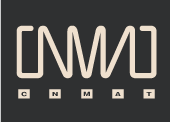Night Edge I
Photos from Night Edge: 1. Aurora Josephson in organ loft; 2. Dancer paige starling sorvillo with Aurora Josephson; 3. final scene, left to right: Aurora Josephson, Myra Melford at the piano, paige starling sorvillo on the floor.
Performance that makes significant use of theatrical elements such as speech, gesture, music, dance, or spectacle. This term also encompasses Stage Design (i.e. props, costumes, lighting, and set design).
Photos from Night Edge: 1. Aurora Josephson in organ loft; 2. Dancer paige starling sorvillo with Aurora Josephson; 3. final scene, left to right: Aurora Josephson, Myra Melford at the piano, paige starling sorvillo on the floor.
Why do we create art and what do we expect it to do? This is the question posed in 68. In the beginning we witness the creative act: a poet, writing and speaking out the earliest fragments of his poems; discovering through experiment his voice, both physically and figuratively.
a thick band of gray, a line that elides the end of day into the beginning of night (2005)
For singer and Max/MSP (with SPAT and La Kitchen sensors)
“Lumen” is an hour-long composition in three movements. Using shadow screens, precise mime-like movement, and a unifying musical language, the movements work together to create a narrative form inspired from both Javanese shadow play and early silent cinema. The three movements can also be performed individually.
I. Lumen Prelude -- in which we are introduced to our
Hysteria (2000) for trombone and electronics.
music by Cindy Cox.
text by John Campion.
trombone performed by Abbie Conant
The large-scale form for ME mirrors the classic seven yogic steps as follows:
1. Preconscious ME, Open Vowel Space
2. ME Builds the Language Wall
3. ME Sings His Narcissistic Canon
4. ME Sings His Greatest Song
5. ME Speaks to the Crowd.
6. ME Speaks to His Prompter
7. ME Is Cast Into the Future and Dies
Edmund Campion, music
John Campion, text and concept
Beethoven’s Melodram, for glass harmonica with recitation, was composed in 1814 as incidental music for Friedrich Duncker’s drama entitled Leonore Prohaska. My Melodrama, for electronic medium, was composed in 2003 as a long coda, attached to the end of Beethoven’s trifle.
2001-02 Persistent Vision , interactive computer music with dance
L’Autre (The Other)
